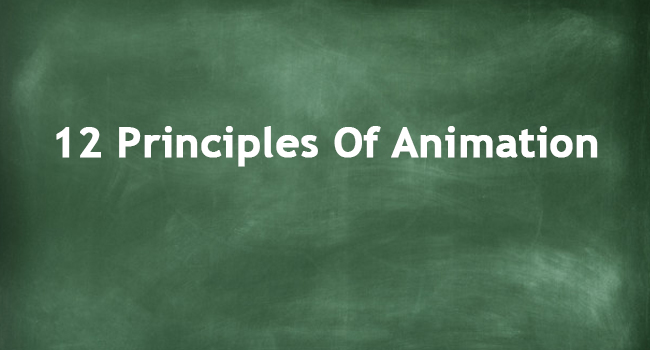12 Principles Of Animation – What Are The 12 Principles?
12 PRINCIPLES OF ANIMATION – In this topic we will now have an overview about the 12 principles of animation.

The 12 principles were introduced by Ollie Johnston and Frank Thomas, both of which are Disney animators who wrote this in their book called The Illusion of Life: Disney.
Its main purpose is to make an illusion of characters that comply to the basic laws of physics. They also focus on more abstract aspects like emotional timing and character appeal.
12 Principles
- Squash and Stretch
- Its purpose is to add weight and flexibility to the drawn objects. The best example of this principle is the bouncing ball.
- Anticipation
- This principle is in order to prepare the audience for and action and to make it even more realistic. For example, a baseball player hints the audience that it will throw the ball by moving his arm back.
- Staging
- Literally, it is the presentation of any idea so that it is completely and unmistakably clear.
- Straight ahead action and pose to pose
- Straight ahead refers to animating something from start to end. Its purpose is to make the movement more fluid and dynamic.
- Pose to Pose, on the other hand, refers to drawing key poses, then fill up the intervals. This is in order to make the animation more dramatic or emotional
- Follow through and overlapping action
- Follow through refers to loosely tied parts of the body that continues to move.
- Overlapping rates on the other hand, refers to the tendency of parts of the body to move differently
- Slow in and Slow out
- This is in order to achieve an even more realistic movements and emphasizes on the extreme movements of an object inversely.
- Arc
- Most natural actions follow an arched trajectory and arcs. In other words, the principle suggests that the objects move in a curved motion in order to make the action more realistic
- Secondary action
- Basically refers to the other movements of an object in order to give more emphasis to the action
- Timing
- Refers to the number of drawings or frames in a given action, which results to the speed of the action. It has to make the objects obey the laws of physics.
- Exaggeration
- Animated objects aim to create the perfect imitation of reality and it depends on the audience whether they seek realism or a stylized one.
- Solid drawing
- Its principle is to apply a three-dimensional space or giving an obect volume and weight
- Appeal
- The charisma of an animated character. It has to gain the empathy and attention of the audience.
Check out the 12 principles in a YouTube video by Alan Becker, the creator of the famous “Animator vs Animation” series.
READ ALSO: Haiku – What Is The History Behind Haiku? (Answers)
